Galaxies and the Milky Way |
|
Spiral galaxy NGC2683 | |  Automatic translation Automatic translation | | Updated June 01, 2013 |
NGC 2683 is a spiral galaxy of magnitude 10, situated on the border of the Cancer. NGC2683 is situated between the constellation of the Lynx and that of the Cancer. Its peculiarity is that it appears at us of profile. Indeed, it is almost completely tilted, it does not allow us to distinguish the spiral arms and the central bulb of the galaxy. The fact of seeing the galaxy by the slice allows easily to measure the curve of rotation of the galaxy by using the Doppler effect. By estimating the rotation speed according to the distance in the center of the galaxy, we can determine the mass of the galaxy, it is this technique which shows the presence of dark matter in the Universe. | | Image: NGC 2683 is a spiral galaxy of magnitude 10 | | 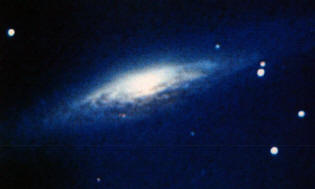 |
Fusion of galaxies NGC4038 and NGC4039 | | | | |
There is approximately 500 million years, both galaxies NGC4038 and 4039 began to collide.
They form one of the most known galactic couples today: Antennas.
In 2004 and 2005, the telescope Hubble, with its new camera in high resolution ACS During the last visit of the telescope Hubble in 2002, the European camera for weakly brilliant objects (FORESAIL) was replaced by a camera of advanced technology for panoramic observations (ACS, Advanced Camera for Surveys). photographed this cosmic shock which takes place in 68 million light years.
The cliché shows with an unprecedented neatness the numerous regions of formation of stars (in pink and in blue) appeared further to the compression of the interstellar gas engendered by the meeting.
Already, in 1997, the spatial telescope had photographed the central part of Antennas.
But this time, the astronomers succeed in detailing heap stellar huge, of which hundred of them only should survive in the form of heap spherical. | | Image: both galaxies NGC4038 and 4039 began to collide. | | 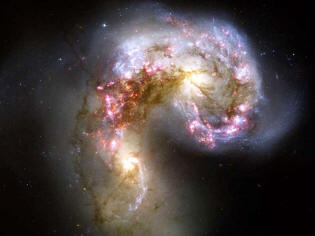 |
Galaxy NGC4465, heavenly masterpiece | | | | |
The galaxy NGC 4565 is a beautiful spiral galaxy, similar to ours.
The beautiful spiral galaxy NGC 4565 is seen from Earth. Also known as the Needle Galaxy for its narrow profile.
The brilliant NGC 4565 is a show for spring telescopes of the northern hemisphere because it is in the region of the Coma Berenices at a distance of 31 million light-years. This color image shows the disk bulging of the galaxy and its central heart dominated by the lights of a population of yellow stars.
The heart is obscured by clouds of dust remarkably cut the central galactic nucleus.
This large island Universe similar to our Galaxy has a diameter of 100 000 light-years.
Some consider NGC 4565 as a masterpiece in heaven. | | Image: The spiral galaxy NGC 4565 order by the slice, in the region of the Coma Berenices. We note the important band of dust that hides part of the bulb. It belongs to the cluster of the Virgin.
Shot from Earth, it presents its disk of gas and dust profile.
It took 2h30 posed for this picture with the Ritchey-Chrétien telescope of 32 centimeters.
Robert Gendler, Connecticut, CCD. | | 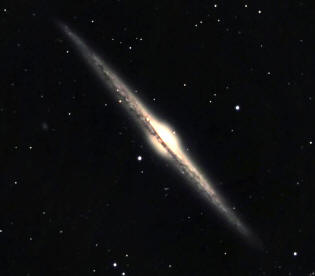 |
Galaxy NGC3370 | | | | |
The spiral galaxy NGC 3370 is located about 100 million light-years from Earth in the direction of the constellation Leo. It closely resembles our own Milky Way, by its shape and size.
In this beautiful image can be seen far into the orange color of many other galaxies scattered across deep space.
The data collected from the image sufficiently precise, were used to determine precisely the distance to this galaxy by studying individual stars such as Cepheids.
NGC 3370, in 1994 the spiral galaxy hosted a stellar explosion strong studied at the time. | | Image: The spiral galaxy NGC 3370 seen by the Advanced Camera for Surveys of the Hubble Space Telescope,
Credit: NASA, ESA, Hubble Heritage (STScI / AURA). | | 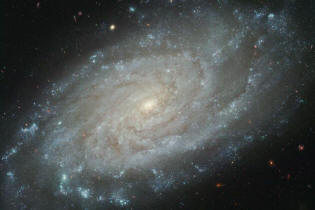 |
Galaxy NGC7331 | | | | |
NGC 7331, with a diameter of 100 000 al, is the main galaxy of a group of galaxies known as Deer Lick group in the constellation of the northern hemisphere, Pegasus. This group is not a mass as small galaxies visible on the image here against are much more remote than NGC 7331.
The heart of the galaxy is composed of old stars that give reddish brown this aspect. As against its spiral arms are home to more young stars, which give them the color blue.
It is about 46 million light-years from Earth in the constellation Pegasus Boreal.
In a same size as our Milky Way galaxy, NGC 7331 is often seen as the apparent collection of galaxies that we see in the background, like a galactic clusters.
But they are not in the same cluster because they are located too far (several hundred million light years) of the galaxy NGC 7331. | | The image of the universe Islands, an impressive depth of field, was obtained from data collected at the Calar Alto Observatory in southern Spain. NGC 7331 offers us here, the characteristic richness of its environment. Image: Credit & Copyright: Vicent Peris (OAUV / PTeam), Gilles Bergond, Calar Alto Observatory. | | 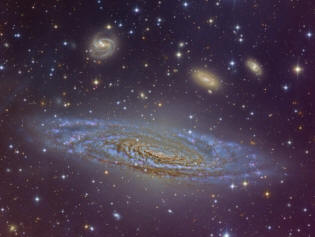 |
Galaxy NGC 918 | | | | |
The spiral galaxy NGC 918 is at the center of this beautiful celestial landscape.
The galaxy is about 50 000 light years in diameter and is about 60 million light years from us in the constellation Aries.
In the foreground of the picture you see the glistening stars in our galaxy, the Milky Way, they are bathed in clouds of cosmic dust reflecting weak starlight.
Beyond its beauty, astrophysicists see this particular image, the light of a supernova, SN 2009js, they had no image.
Pictured is the supernova to the marked locatiosn of the 2 strokes, just below and left of the center of the galaxy. This supernova is the explosion of a massive star in the plane of NGC 918. | | It has been observed for the first time in October 2009 by teams from Japan and the United States specializing in the research of a supernova. Image: The galaxy NGC 918, a beautiful spiral galaxy in the center of the image.
Credit & Copyright: Joseph Brimacombe | | 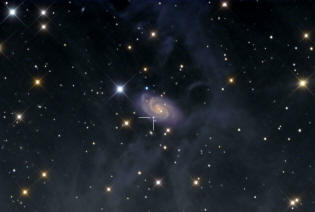 |
Polar ring galaxy NGC 660 | | | | |
The spiral galaxy NGC 660 polar ring is the center of a galaxy in the constellation Pisces.
NGC 660 is a distance of more than 20 million light years from our solar system.
Particularly rare form earned him the title of polar ring galaxy.
It may be noted in this photo, a rotating ring, nearly perpendicular to the plane of the galaxy, as if the ring came from another galaxy captured.
The polar ring of NGC 660 has a diameter of about 40 000 light years, it is larger than the disk of the galaxy.
The few polar ring galaxies are of particular interest to scientists studying the gravitational influence of dark matter on the rotation of the disk and the polar ring. | | Image: Located 20 million light years from our solar system, the galaxy NGC 660, polar ring, seems to have been formed from the collision of two galaxies.
Credit & Copyright: Immo Gerber & Dietmar Hager (TAO) | | 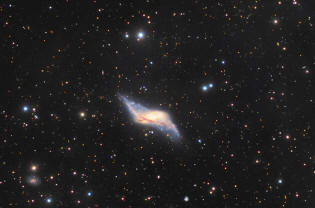 |
Galaxy M88 or NGC 4501 | | | | |
The French astronomer Charles Messier described the 88th entry in his famous catalog as a "spiral nebula without stars."
Advances in instrumentation allow us to know that M88 is indeed a beautiful spiral galaxy, but full of stars, gas and dust, just like our own Milky Way.
Indeed, M88 is even one of the brightest galaxies in the Virgo cluster, about 50 million light-years from us.
The magnificent spiral arms of M88 are easily distinguished on this cosmic portrait colorful, with their veins begin dust around the nucleus and enhanced the blue young star clusters and pink regions of star formation.
The yellow cast of the nucleus is due to its relatively old population of stars. | | The spiral galaxy M88 has a diameter in excess of 100 000 light years, it is located in the constellation Coma Berenices.
Its magnitude remains fairly low: 9.6 in magnitude. Image: Messier 88 galaxy
Credit & Copyright: Adam Block, Mt. Lemmon SkyCenter, U. Arizona | | 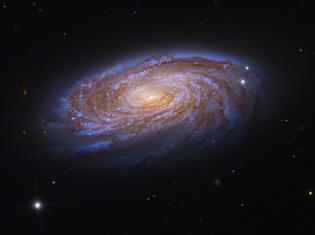 |
 Automatic translation
Automatic translation










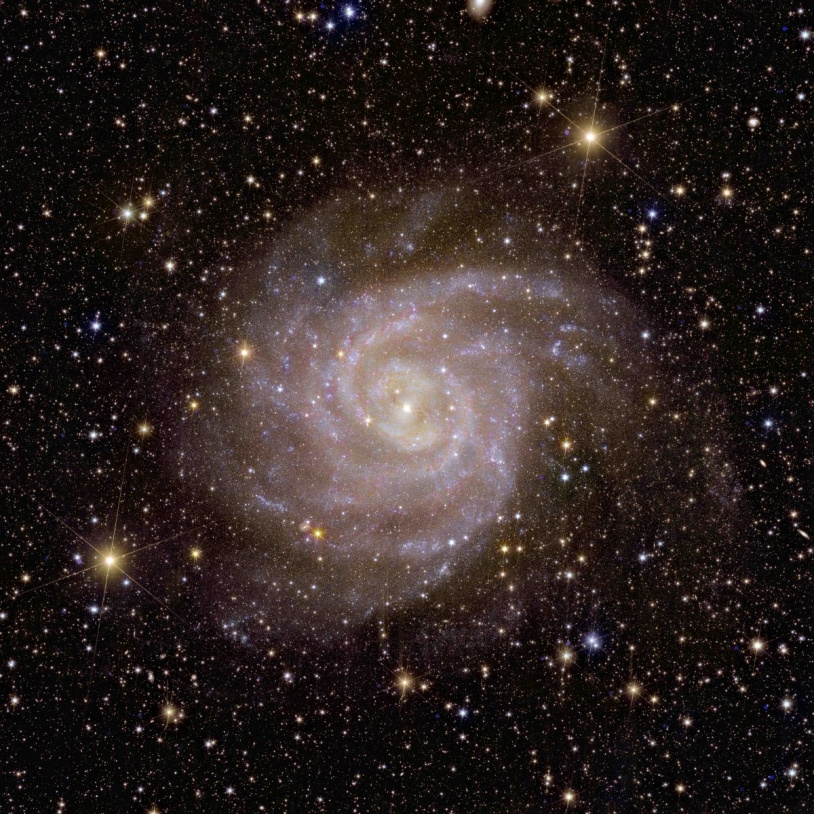 The hidden galaxy, one of Euclid's first images
The hidden galaxy, one of Euclid's first images
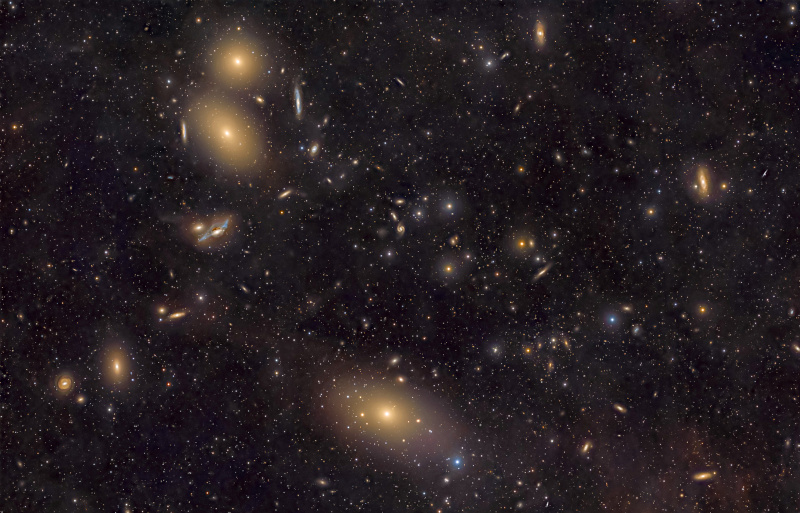 The Virgo Cluster spans approximately three Full Moons
The Virgo Cluster spans approximately three Full Moons
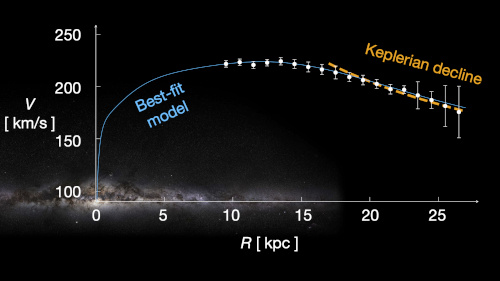 Where did the dark matter in our Galaxy go?
Where did the dark matter in our Galaxy go?
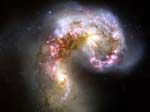 Merging galaxies and black holes
Merging galaxies and black holes
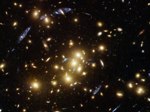 Mirages created by gravitational lenses
Mirages created by gravitational lenses
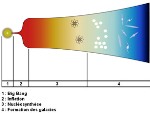 Mystery of the Big Bang, the problem of the horizon
Mystery of the Big Bang, the problem of the horizon
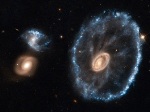 Cartwheel Galaxy Cosmic Event
Cartwheel Galaxy Cosmic Event
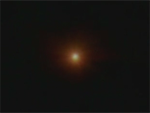 The first second of our history
The first second of our history
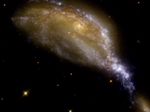 A small galaxy tears apart the large NGC 6745
A small galaxy tears apart the large NGC 6745
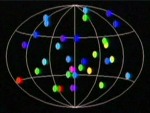 The mystery of gamma bursts
The mystery of gamma bursts
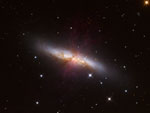 The Cigar Explosion
The Cigar Explosion
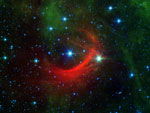 Shockwaves
Shockwaves
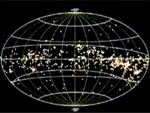 Gould's belt, a stellar fireworks display
Gould's belt, a stellar fireworks display
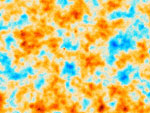 Recombination in cosmology
Recombination in cosmology
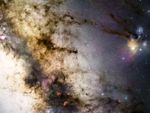 Journey to the center of our galaxy
Journey to the center of our galaxy
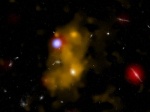 Lyman-alpha bubbles
Lyman-alpha bubbles
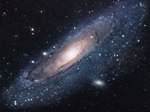 Andromeda in the ultraviolet
Andromeda in the ultraviolet
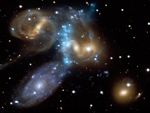 The most beautiful galaxy clusters
The most beautiful galaxy clusters
 Tinkerbell merger of three galaxies
Tinkerbell merger of three galaxies
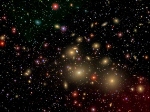 A gigantic black hole
A gigantic black hole
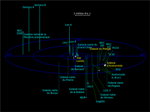 Enigma of coplanar galaxies
Enigma of coplanar galaxies
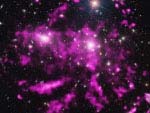 The cluster of galaxies Coma in its soup
The cluster of galaxies Coma in its soup
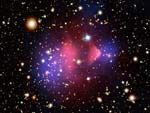 The cannonball, proof of dark matter
The cannonball, proof of dark matter
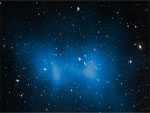 El Gordo galaxy cluster
El Gordo galaxy cluster
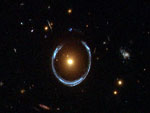 Einstein ring and cross
Einstein ring and cross
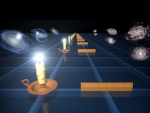 How to measure distances in the Universe?
How to measure distances in the Universe?
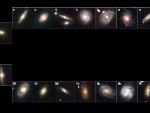 The Hubble sequence and types of galaxies
The Hubble sequence and types of galaxies
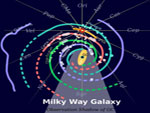 The spiral shape of the galactic arms
The spiral shape of the galactic arms
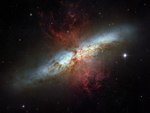 Even more stars, the Cigar galaxy
Even more stars, the Cigar galaxy
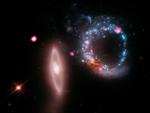 The Universe of X-rays
The Universe of X-rays
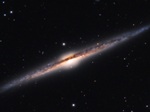 The most beautiful galaxies
The most beautiful galaxies
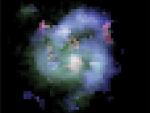 The oldest galaxies in the universe
The oldest galaxies in the universe
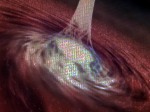 Quasars the nuclei of galaxies
Quasars the nuclei of galaxies
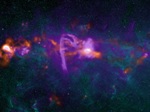 Sagittarius A black hole at the center of our Galaxy
Sagittarius A black hole at the center of our Galaxy
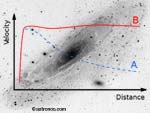 The MOND theory and its contradiction
The MOND theory and its contradiction
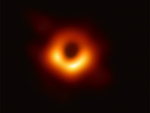 The first image of a black hole
The first image of a black hole
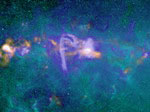 Central area of the Milky Way
Central area of the Milky Way
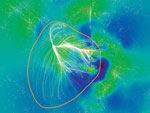 Laniakea, our supercluster of galaxies
Laniakea, our supercluster of galaxies